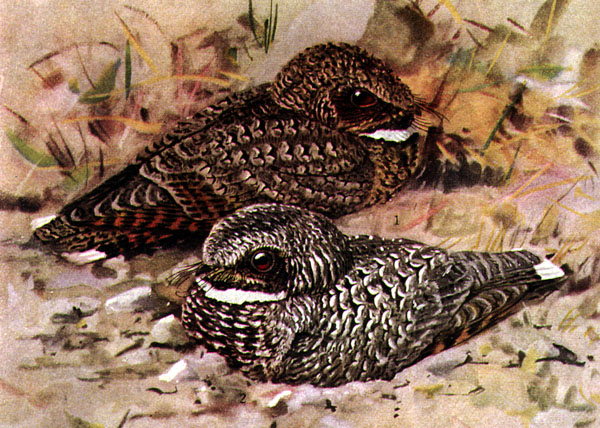Common Poorwill
| Phalaenoptilus nuttallii | Order: Caprimulgiformes | Family: Caprimulgidae (Nightjars and Allies) |

This splendid bird apparently heard that old parental saw that children should be seen and not heard and rebelled by doing the exact opposite. Found year-round in desert areas of Mexico and the American Southwest, it extends its range during the breeding season into arid scrub and sagebrush habitats as far north as southern Canada, and as far east as central and even eastern Kansas, though its distribution can be very localized.
The Common Poorwill is the first bird that modern scientists ever recognized could hibernate, or a very close approximation of hibernation. In 1948, a scientist named Edmund Jaeger wrote a paper in The Condor about finding one engaged in a deep state of torpor in the Chuckwalla Mountains of New Mexico and checking up on the bird throughout that entire winter. The next year he wrote a follow-up after finding the same individual bird in torpor again.
Jaeger’s observations and careful documentation were very important, but he did not “discover” this behavior. Indeed, he wasn’t even the first English-speaking naturalist to notice. Meriwether Lewis described poorwills doing this very thing in North Dakota in his journal during the Corps of Discovery Expedition. Tragically, Lewis never published his journals, and because of the nature of the expedition, he couldn’t follow the same individual birds over the course of a winter to make sure they stayed in that state of torpor all season as Jaeger did.
Native peoples were in the know about the poorwill’s hibernation-like habits long, long before English-speaking scientists made their “discoveries.” The Hopi Indians had clearly observed this: the Hopílavayi name for the poorwill is Hölchoko, which means “the sleeping one.” The Pima Indians also knew about the bird’s sleeping habits.
I’ve never had the privilege of photographing a Common Poorwill. The splendid drawing here is by Louis Agassiz Fuertes from 1926.